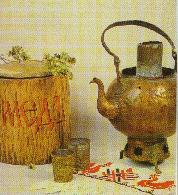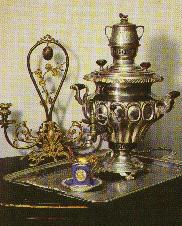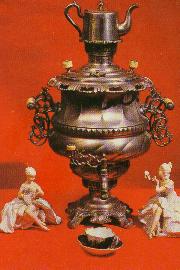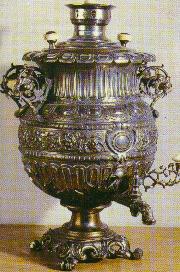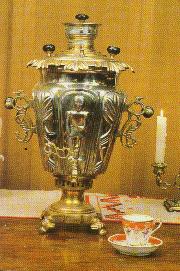Samovar
is original Russian invention. Its origins are connected with tea.
Tea was first brought into Russia from West Mongolia in the 17th century
and was used as a medicine among the nobility.
As it gained popularity, tea became a competitor of sbiten, the favorite
drink in Russia at the time, which components were hot water, herbs and
honey. In the 18th century, samovar-kitchens were operated in the Urals
and town of Tula. They were made of three parts, in two of which the meals
were cooked, and in the third, the tea was made. Sbitennik and samovar-kitchen
were first samovar prototypes.
